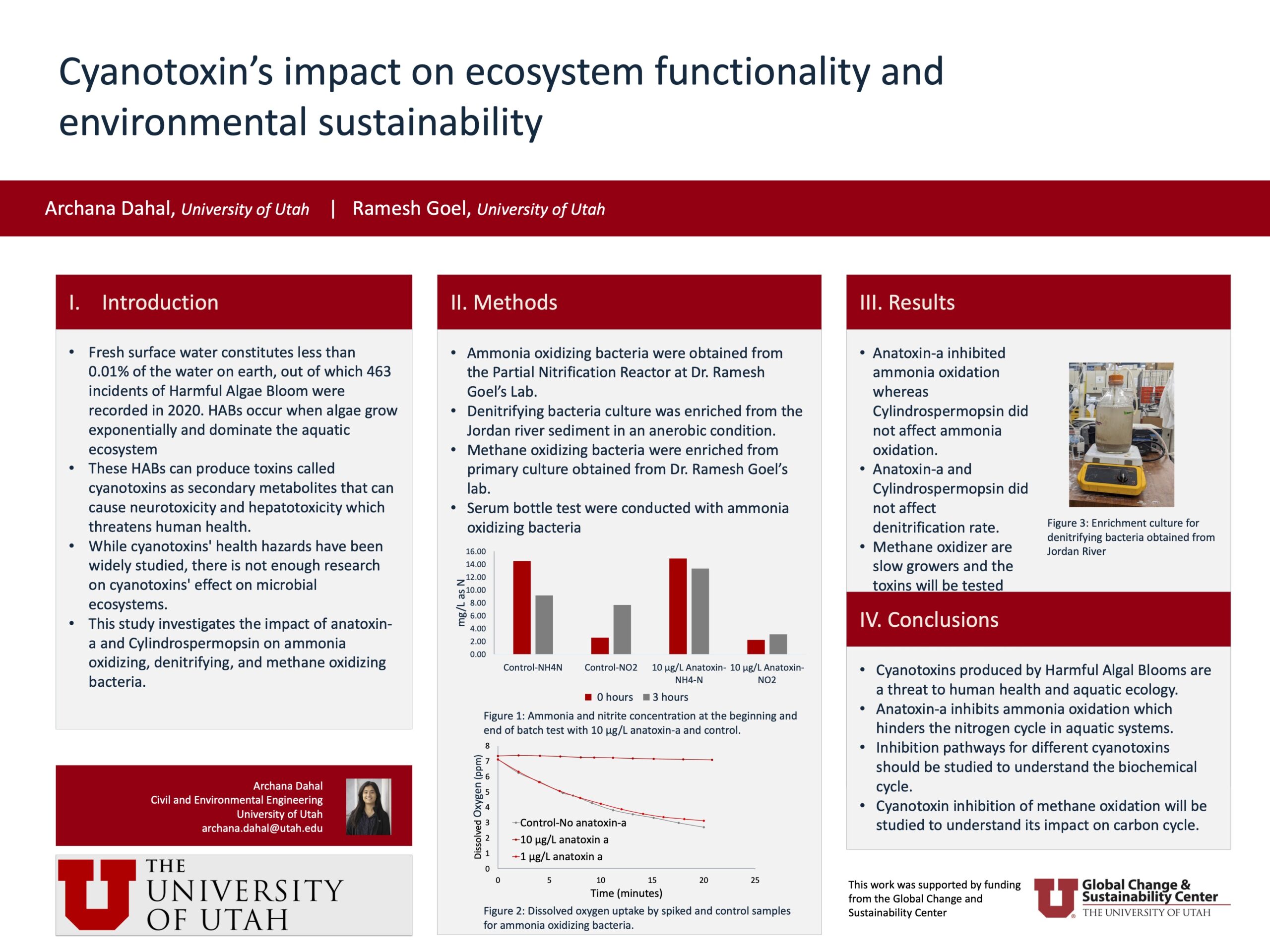Cyanotoxin impact on ecosystem functionality and environmental sustainability
-Archana Dahal, Ramesh Goel
[bs_collapse id=”collapse_bb86-afd7″]
[bs_citem title=”Bio” id=”citem_e610-6c22″ parent=”collapse_bb86-afd7″]
I am a second year master’s student in environmental engineering program at the University of Utah. I completed my bachelors in biological engineering at the University of Idaho. I am very passionate about water and wastewater treatment to ensure safe clean water for drinking and recreational use.
[/bs_citem]
[bs_citem title=”Abstract” id=”citem_eca8-96a7″ parent=”collapse_bb86-afd7″]
Fresh surface water constitutes less than 0.01% of the water on earth, out of which 463 incidents of Harmful Algae Bloom were recorded in 2020. HABs occur when algae grow exponentially and dominate the aquatic ecosystem. These HABs can produce toxins called cyanotoxins as secondary metabolites that can cause neurotoxicity and hepatotoxicity which threatens human health. While cyanotoxins’ health hazards have been widely studied, there is not enough research on cyanotoxins’ effect on microbial ecosystems. Anatoxin-a is one of the potent cyanotoxins which is lethal on animals. In this study, the inhibition kinetics of anatoxin-a is studied on ammonia-oxidizing bacteria and amoA gene expression. Preliminary results have demonstrated a 70% inhibition of ammonia oxidation in 3 hours at anatoxin-a concentration of 10 µg/L.
[/bs_citem]
[bs_citem title=”Narrative” id=”citem_780c-0f71″ parent=”collapse_bb86-afd7″]
Harmful algae blooms releases cyanotoxins that can adversely effect aquatic ecosystem and human health. However, the study of these toxins on microbial ecosystem has not been studied. Microbes play an important role to regulate nitrogen and carbon cycle. In this project, the inhibition kinetics of one of the potent cyanotoxins called anatoxin-s is studied.
[/bs_citem]
[/bs_collapse]

